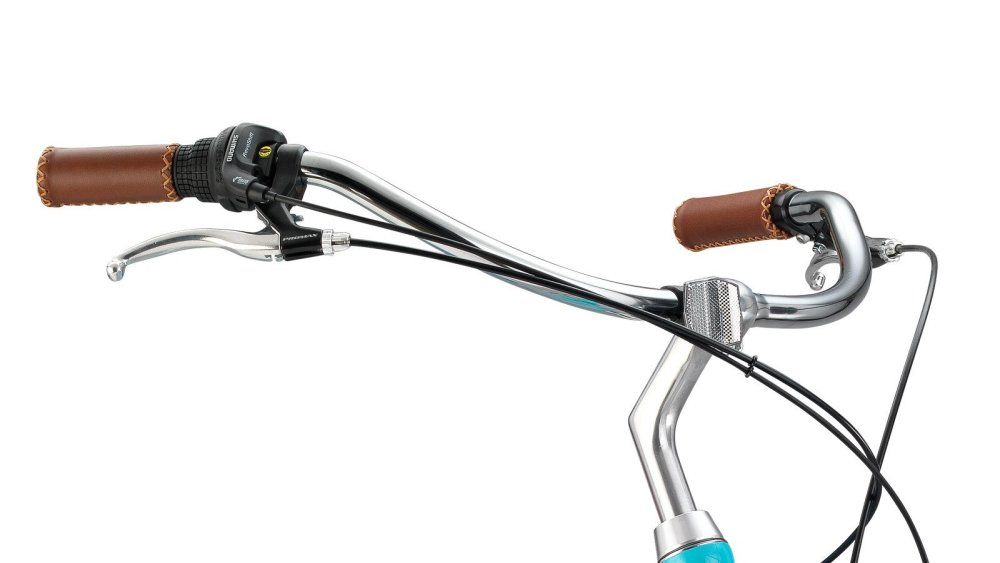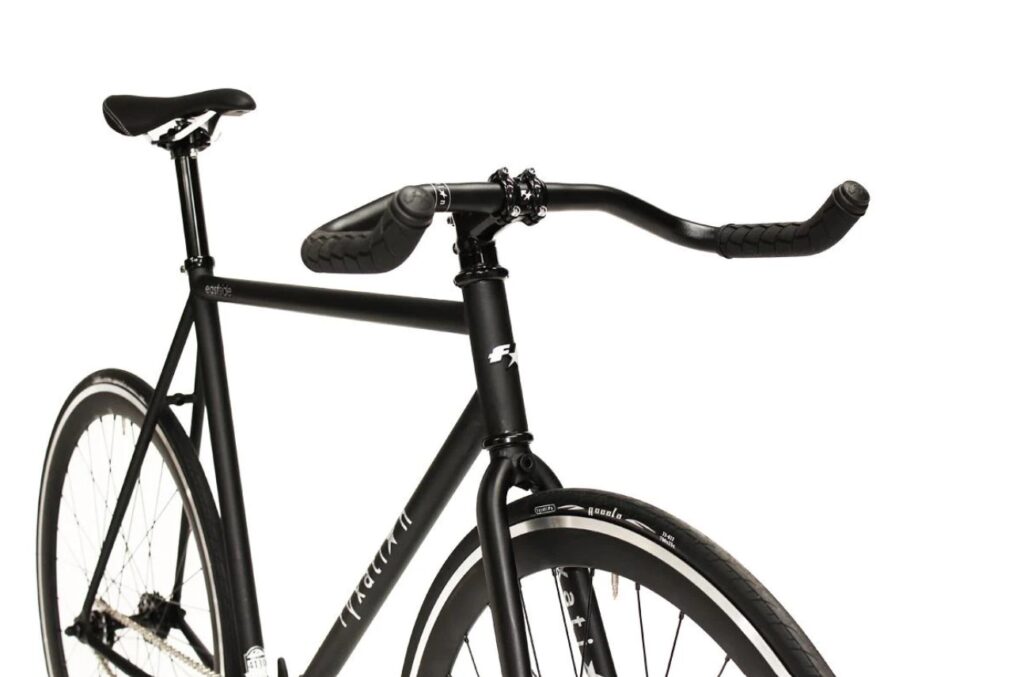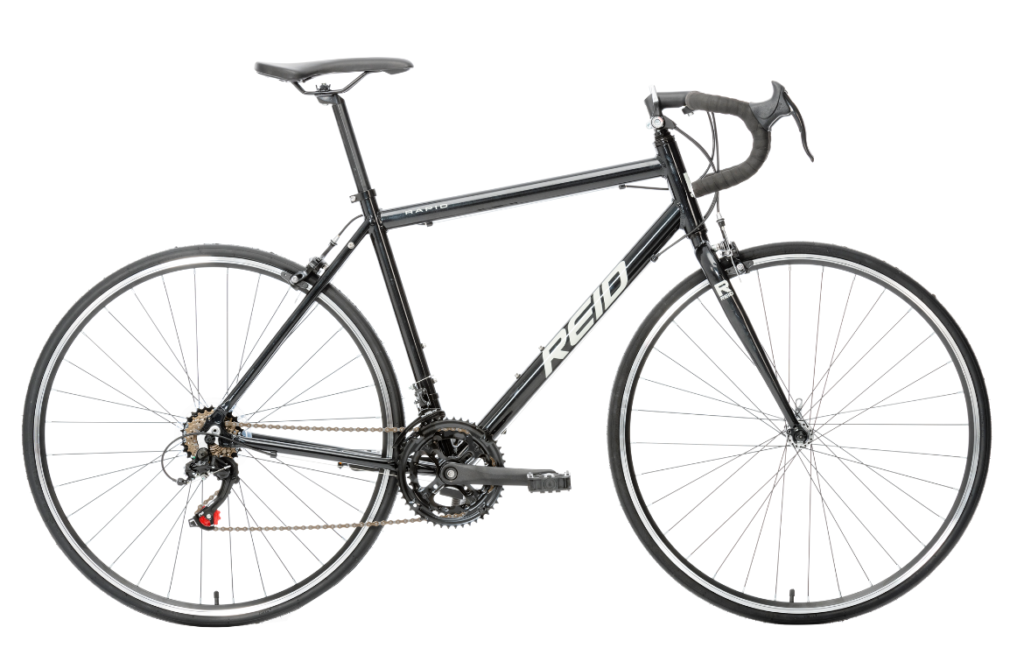Handlebars play an important role in any bicycle, defining the core values of ride comfort, versatility, and control. These aspects usually vary based on riders, road conditions, and a few other circumstances.
So, it is always wise to choose the bicycle handlebar that best meets your individual needs.

This is why Mountain Bikes, Road Bikes, or Gearless Bikes have varying types of handlebars. And, each handlebar provides a unique experience in overall handling, stability, and reliability.
One key takeaway is that the different bicycle handlebars play different roles.
If you are looking to buy a new cycle, then you should know about bicycle handlebars and their types. This will not only help you choose the bicycle you are looking for but also give you information on what you are getting into.
Let’s jump right into it!
Bicycle Handlebars Types
There are several different types of bicycle handlebars. The number of handlebar types is highly debatable, as it can range anywhere from 5 to 15+.
To make things easier for both you and me, we have included only the most common types of handlebars in a bike.
Every other bike handlebar you might come across will be an iteration or combination of the following.
Without further ado, here is a quick list of 5 common types of bicycle handlebars.
#1. Flat Handlebars
Flat bars are the most commonly used and widely recognizable cycle handlebars. These are either completely flat or slightly bent towards the rider.
These kinds of flat handlebars are popular in mountain bikes and road bikes as it provides extra stability for higher performance over uphill climbs, downhill descents, and rough trails.

However, it can be hard on the wrist due to limited hand positions.
Nevertheless, the riding position is quite upright. Moreover, the flat handlebars are perfect and easy for beginners (both adults and kids).
Advantages and Disadvantages of Flat Handlebars
Pros of Flat Handlebars
Flat bars are easier to control and steer in tight traffic.
With its upright riding position, there is less pressure on the spine. Moreover, it ensures rider safety by putting the rider’s hands next to the brake levers.
And, the riders can easily mount optional accessories like light, GPS, bell, and basket.
Cons of Flat Handlebars
These types of bike handlebars aren’t comfortable for long rides. Since it only offers a single handlebar position, it is prone to wrist aches.
Moreover, the upright riding posture also limits aerodynamics.
So, the riders inefficiently burn more energy to maintain the riding pace. It is also difficult during a hill climb.
And, the wider handlebars are difficult to pass through narrow gaps.
| Pros | Cons |
| It is easy to control and ride through tight traffic. | There are limited hand positions, so it is uncomfortable on the wrist on longer trips. |
| It provides an upright riding position, so there is less pressure on the spine. | The upright position also provides poor aerodynamics and hinders performance during higher speeds. |
| Brakes are easily accessible. | Wider flat handlebars can be difficult to move through narrow streets. |
| It is easy to attach additional accessories to the handlebar. | Due to their positioning, these bicycle handlebars types are harder to shift weight forward on the hill climb. |
#2. Riser Handlebars
Riser bars are wider handlebars raised slightly upwards on either end. It is also known as a Flat Raiser, as it is derived from the flat-type handlebar.
Plus, the raised styling puts less pressure on the hands and wrists with a more upright position. It is commonly used in Trail bikes and Road bikes.

So, it goes a step further in terms of comfort.
Nevertheless, the riding position is quite upright. Moreover, the riser handlebars are also perfect and easy for beginners (both adults and kids) as well as experienced riders.
Advantages and Disadvantages of Riser Handlebars
Pros of Riser Handlebars
It is more comfortable to ride as there is comparatively less pressure on the hands. On top of that, the upright riding position also provides a good view of the riders.
Like the flat handlebars, the wider handlebars provide reasonable control for the riders. And, it is easier to mount additional accessories on the handlebar.
Cons of Riser Handlebars
With the upright riding posture, it increases the pressure on the crotch. And, the riding posture also decreases aerodynamics which ultimately affects the performance.
Interestingly, both the flat handlebar and riser handlebar have the same disadvantage. The wider bars make it difficult to pass through narrow streets.
Furthermore, it is comparatively expensive to replace.
| Pros | Cons |
| There is less pressure on the hands and wrists due to its raised nature. | It increases saddle pressure on the crotch due to its upright position. |
| It provides an upright riding position for a clear view of the road. | The upright position also provides poor aerodynamics and hinders performance during higher speeds. |
| The wider handlebars provide leverage and control to the riders. | Wider flat handlebars can be difficult to move through narrow streets. |
| It is easy to attach additional accessories to the handlebar. | Raised handlebars are expensive compared to Flat handlebars. |
#3. Cruiser Handlebars
Cruiser bars are bent toward the riders at the bar ends. It is also known as the North Road or Upright or Mustache handlebars.
These are the most comfortable bicycle handlebars types out there.

If you are looking for a bicycle in a completely upright position, this is it. Moreover, these handlebars put the wrist in the most natural position while riding.
These handlebars are typically used in city bikes and comfort bikes.
Beginner riders may find these handlebars a bit difficult at first. Nevertheless, it is suitable for all kinds of riders.
Advantages and Disadvantages of Cruiser Handlebars
Pros of Cruiser Handlebars
The wrists are positioned in the most natural state, helping set up the most upright riding position.
Moreover, the upright posture enhances the view of the road.
The wider handlebars provide good leverage and control for the riders while offering a convenient mount space for the accessories.
Cons of Cruiser Handlebars
The saddle (seat) needs extra cushioning and padding to easily accommodate the upright riding posture.
Again, the upright riding posture also hinders aerodynamics.
Cruiser handlebars are the most difficult to use during a hill climb. And, it is comparatively heavier than other handlebars.
| Pros | Cons |
| The wrists are positioned in the most natural position for comfortable riding. | The saddle needs extra cushioning and padding due to its upright position. |
| It provides the most upright riding position for a clear view of the road. | The upright position also provides poor aerodynamics and hinders performance during higher speeds. |
| The wider handlebars provide good leverage and control to the riders. | It is difficult during an uphill climb. |
| It is easy to attach additional accessories to the handlebar. | These bikes are heavier compared to other handlebars. |
#4. Bullhorn Handlebars
Bullhorn handlebars are shaped like the horns of a bull, curved up and bent away from the riders.
These handlebars provide an aggressive riding position for performance and aerodynamics. So, it reduces the visibility of oncoming traffic.

It provides multiple hand positions across varying terrains and riding cycles.
These kinds of handlebars are not recommended for beginners. Rather, it is used by track cyclists for competitions.
Interestingly enough, the bullhorn handlebars have been modified to Aero handlebars, for more track-focused riding.
Advantages and Disadvantages of Bullhorn Handlebars
Pros of Bullhorn Handlebars
Bullhorn handlebars have an aggressive riding position, offering improved aerodynamics and high-speed stability.
Additionally, it handles great in uphill climbs, narrow roads, and tight traffic.
Plus, it also looks cool with multiple hand positions for an adaptive riding style!
Cons of Bullhorn Handlebars
The aggressive riding posture doesn’t offer a good view of the traffic. Moreover, the Type of Bicycle Handlebarscornering can be a challenge.
Depending on the posture, the brake levers aren’t always accessible.
Unlike other types of bicycle handlebars, the Bullhorn handlebars are not beginner friendly.
| Pros | Cons |
| Improved aerodynamics and high-speed stability. | The aggressive riding position hinders the oncoming view of the traffic. |
| The handlebar styling improves the look of the cycle. | Brake lever accessibility varies. |
| Easy to maneuver on narrow roads and tight traffic | Cornering is difficult due to the combination of aggressive riding position and less leverage of the handlebars. |
| Uphill climbs are easy. | Difficult for a beginner to get used to it. |
#5. Drop Handlebars
Drops bars are the most recognizable bicycle handlebars types due to their hooked shape styling. It is a sort of combination of flat, cruisers, and bullhorn handlebars.
It offers multiple hand positions without hindering aerodynamics and performance. Interestingly enough, it excels in both uphill climbs as well as downhill descents.

These handlebars are found in road bikes, racing bikes, as well as adventure bikes.
Advantages and Disadvantages of Drop Handlebars
Pros of Drop Handlebars
The drop handlebars are the most versatile handlebar in this list. It offers multiple hand positions for accents and descents.
It has impeccable aerodynamics with good leverage for pedaling and hill climbs.
Plus, it is one of the best-looking handlebars out there. It is one of the most common road bikes.
Cons of Drop Handlebars
The aggressive riding position means increased pressure on the hands and spine. Moreover, it also hinders the oncoming view of the traffic.
These handlebars aren’t great at handling cornering and sharp turns.
Depending on the posture, the brake levers aren’t always accessible. Furthermore, it may be difficult for beginners to get used to it.
| Pros | Cons |
| Improved aerodynamics and high-speed stability. | The aggressive riding position hinders the oncoming view of the traffic. |
| The handlebar styling improves the look of the cycle. | Brake lever accessibility varies. |
| Easy to maneuver on narrow roads and tight traffic | Frequent cornering is difficult due to the combination of aggressive riding position and less leverage of the handlebars. |
| Uphill climbs and Downhill descents are easy. | Difficult for a beginner to get used to it. |
Which is the Best Handlebar Material?
There are four commonly used materials in the handlebar: Aluminium Alloy, Carbo, Titanium, and Steel.
These handlebar materials vary in cost and weight.
Aluminum Alloys are one of the popular choices. It is lightweight, affordable, and a commonly available option.
Carbon Fiber is the most lightweight handlebar material. It is a popular choice for those looking to maximize their performance. However, it is the most expensive option, but more prone to damage.
Titanium handlebars act as a bridge between Aluminum Alloys and Carbon Fiber. Nevertheless, it is still the most expensive handlebar material, offering more flexibility than Carbon fiber.
Steel handlebars are the least common handlebars. These are rarely used because of their heavier weight and expensive price compared to Aluminum alloys.
Which is the Best Bicycles Handlebar?
There is no definitive answer when it comes to the ranking of the best handlebar.
It is about finding a good balance between comfort, riding position, and performance. The handlebar should be an extension of yourself.
The riding should feel more fun and perfectly fit your way of riding.
If you only ride in the city or on occasional rides, then the cruiser handlebar should do it. However, if you are a cycling enthusiast and care about riding dynamics and aerodynamics, it would be wise enough to go for Bullhorn bars or Drop bars.
Again, this is something you need to figure out.
So, which one is the best bicycle handlebar for you? Tell us in the comments down below!
FAQs about Bicycle Handlebars Types
Which is the most comfortable bike handlebar?
Cruiser handlebars are the most comfortable bike handlebar. It offers a complete upright position while cycling.
Which bicycle handlebar is better for touring?
Since the drop handlebar offers versatile hand positions, it is a better choice for touring.
Which type of bike handlebar is best for aerodynamics?
Bullhorn and Dropbar handlebars are the best choices for aerodynamics because of their aggressive riding posture.
Which bicycle handlebar type is best for beginners?
Flat and Raiser handlebars are best for beginners.
Which handlebar is best for advanced riders?
Bullhorn and Dropbar handlebars are the best choices for advanced riders.
Which handlebar is best for climbing uphill?
A drop handlebar is the best option for climbing uphill.
Are wider or narrower handlebars better?
Wider handlebars provide better handling and leverage technical trails and tight corners. Plus, it is more comfortable to ride. On the other hand, the narrower handlebars have better high speeds and are easier to filter through the traffic.
Which handlebar material is the best?
Aluminum alloy handlebars are the most commonly used handlebar, offering a good balance between weight, price, and reliability. Moreover, Carbon Fiber can be a go-to choice for those looking to maximize their performance.

Pingback: Gear vs Non Gear Cycle: Which is Best for You?